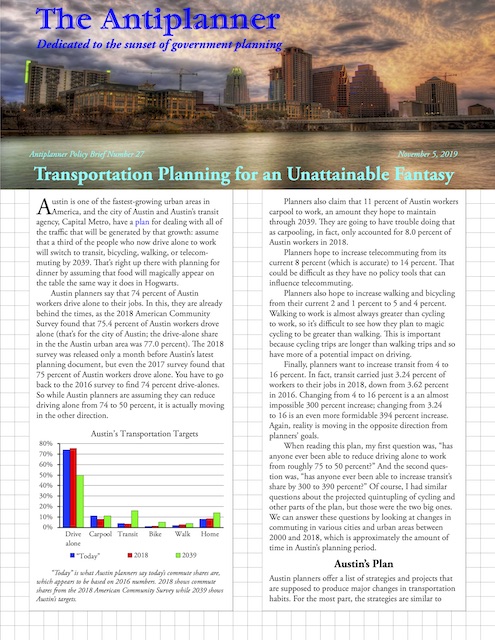America’s transit systems carried 2.9 percent more riders in September 2019 than September 2018, according to data released by the Federal Transit Administration yesterday. After deducting New York, ridership still grew by half a percent. Moreover, ridership grew in 27 of the nation’s 50 largest urban areas, though one of those was Dallas-Ft. Worth, where the apparent ridership growth is really just due to a change in the method of counting bus riders.
September 2019 had one more work day than September 2018, which accounts for some of the increase. A recovery from some of the maintenance delays experienced in New York and Washington explains some of the rest of it. Every major mode of transit saw an increase in riders except light rail, which experienced a 5.4 percent decline.
Year-to-date ridership is not so positive, as it fell by 0.1 percent nationwide, 1.4 percent outside of New York, 4.0 percent for light rail, and 0.8 percent for buses. Continue reading








